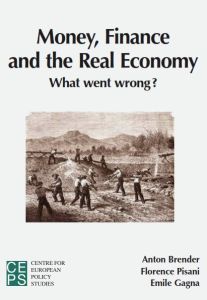Join getAbstract to access the summary!

Join getAbstract to access the summary!
Anton Brender, Florence Pisani and Emile Gagna
Money, Finance and the Real Economy
What Went Wrong?
CEPS, 2015
What's inside?
Corporate investment is still down despite low interest rates, so where will international surplus savings go?
Recommendation
Economic reports can be dry, pedantic affairs, but this text from economists Anton Brender, Florence Pisani and Emile Gagna reads more like a mainstream book – a whodunit that unravels the reasons behind the stagnant aftermath of the 2008 crisis. The authors cleanly and concisely discuss some big economic policy issues, particularly the important role of financial systems in developed economies. Their description of how risks circulate and spread is especially noteworthy, as is their explanation of how risk-averse savers helped create a risk-hungry – and by 2008, fragile – shadow banking sector. However, their main conclusion – that the world has failed to organize the investments required to absorb surplus global savings – elegantly ties together the seeming paradox of expanding asset bubbles and stifled economic growth. While the general reader may find this a challenging read, getAbstract believes that those with some understanding of economics can gain a great deal of new perspective from it.
Summary
About the Authors
Anton Brender, Florence Pisani and Emile Gagna are economists with Candriam Investors Group, a New York Life Company.


















Comment on this summary